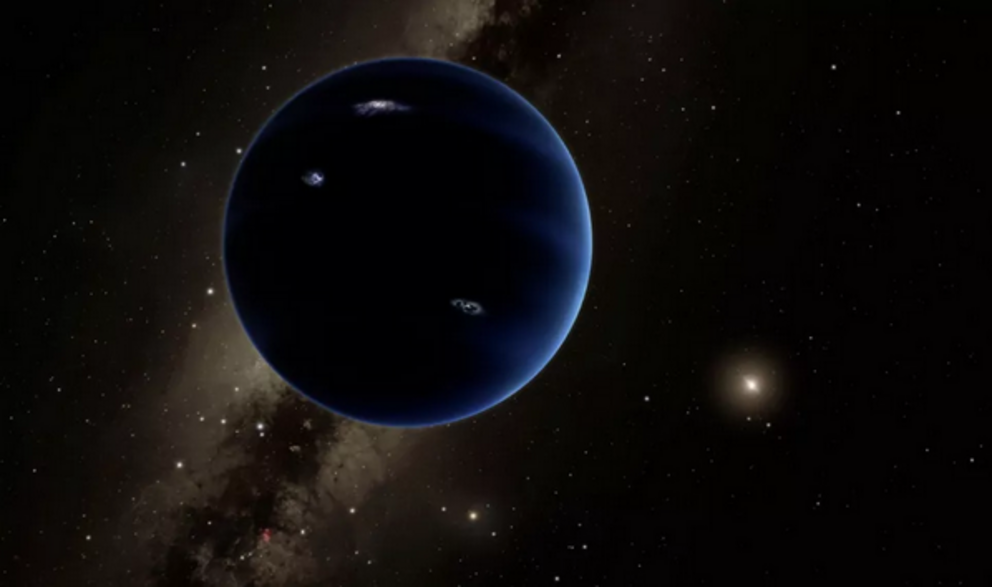Planet Nine is still missing in action after survey of 87% of the Southern Sky
Scientists hunted for 6 years and found nothing significant.

Artist's illustration of Planet Nine, a world about 10 times more massive than Earth that may lie undiscovered in the far outer solar system. (Image credit: Caltech/R. Hurt (IPAC))
Astronomers searching for our solar system's elusive Planet Nine — a theoretical world that may lurk deep in a cloud of icy rocks far beyond the orbit of Neptune — have come up short once again.
In a recent paper published Dec. 23, 2021 in The Astrophysical Journal, researchers pored over six years of telescope data in an attempt to identify potential signs of Planet Nine in the southern sky. Captured with the Atacama Cosmology Telescope (ACT) in Chile between 2013 and 2019, the observations covered about 87% of the sky visible from the Southern Hemisphere.
While the team identified more than 3,000 candidate light sources located between 400 and 800 astronomical units (AU) away (that's 400 to 800 times the distance between Earth and the sun), none of those candidates could be confirmed as planets.
"No significant detections are found," the team wrote in their paper.
However, the fruitless search doesn't disprove the theoretical planet's existence: It merely narrows down where that planet may be lurking, and what its properties could be, the researchers said. Ultimately, the study covers between just 10% and 20% of the planet's possible locations in the sky.
A cold, dark world
Astronomers first began searching for Planet Nine in 2016 (or 10 years after Pluto was demoted from its position as our solar system's ninth planet to become a mere dwarf planet).
Astronomers noticed that six rocky objects beyond the orbit of Neptune clustered in a strange way, with the most-distant points in their orbits located much farther from the sun than the nearest points of their orbits. The team calculated that the gravitational pull of an unseen planet measuring five to 10 times the size of Earth could explain the eccentricity in those rocks' orbits.
Half a decade later, many teams have tried and failed to detect that theoretical world. The biggest hurdle in the hunt for Planet Nine is the sheer distance involved. While Pluto orbits between 30 and 50 AU from the sun, the authors of the 2016 study estimated that Planet Nine could be anywhere between 400 and 800 AU away — so far away, in fact, that sunlight may not reach the planet at all.
That means there's little hope of ever detecting the cold, dark Planet Nine with standard visible light telescopes. Instead, astronomers turn to the likes of the ACT telescope, which can search the cosmos in millimeter wavelengths — a short form of radio waves that come close to infrared radiation. Millimeter telescopes are often used to peer into the dim, freezing gas clouds where new stars form, because such clouds don't absorb millimeter light, according to the International Research Institute for Radio Astronomy.
While this survey failed to turn up any compelling evidence of Planet Nine, new millimeter telescope facilities, such as the Simons Observatory that's currently under construction in Chile's Atacama Desert, will continue the search with even more sensitive telescopes — allowing researchers to narrow down even further where our long-lost neighbor might be hiding.
Originally published on Live Science.
Video can be accessed at source link below
